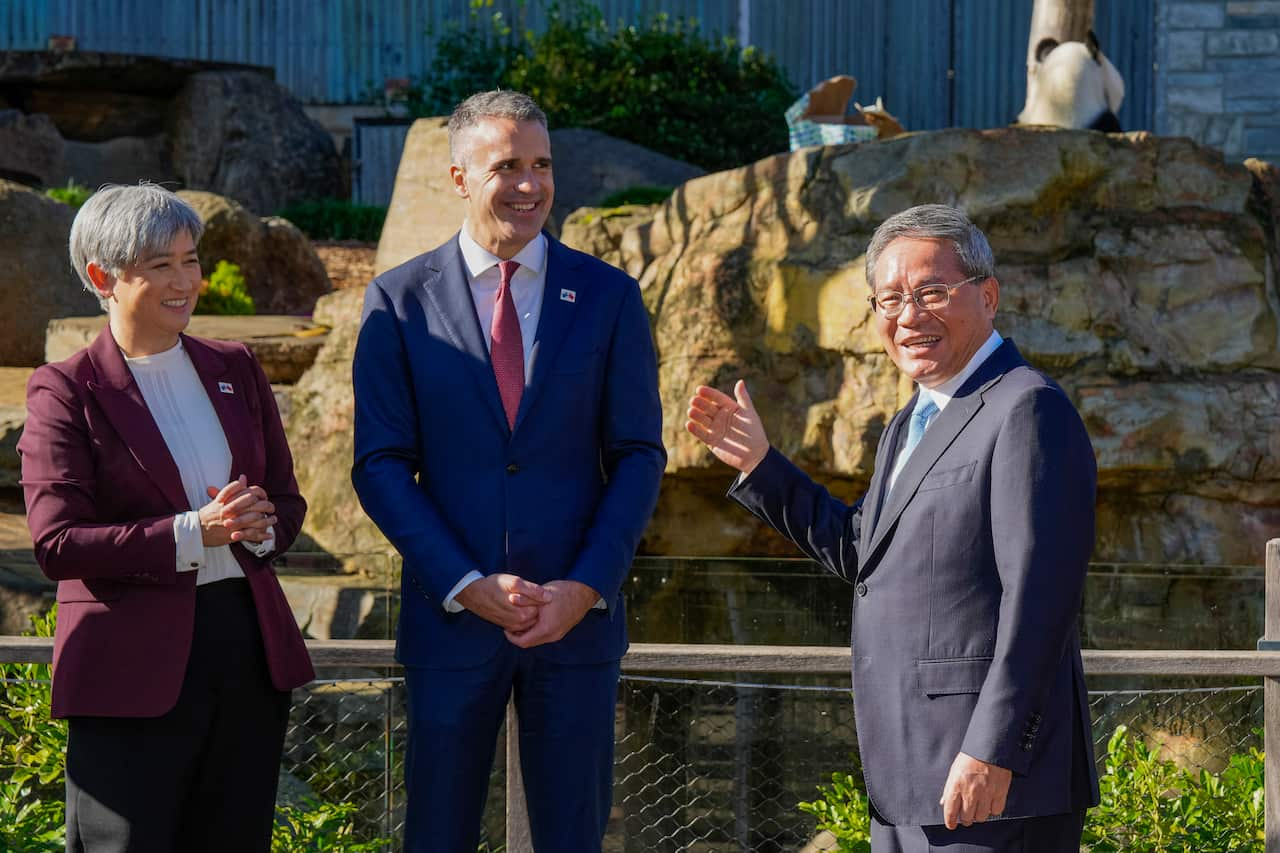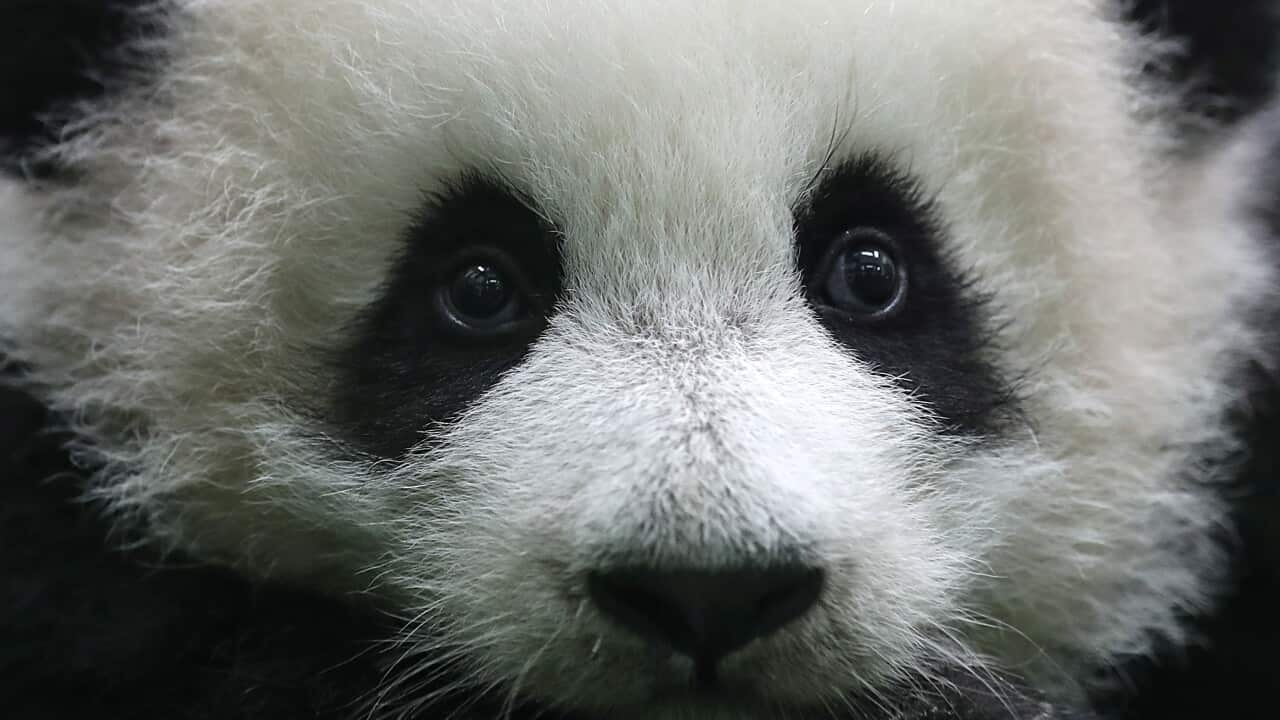Key Points
- Chinese premier Li Qiang is visiting Australia, the first such trip in seven years.
- Li is expected to attend Adelaide Zoo and extend the loan of Wang Wang and Fu Ni.
- Panda diplomacy is thought to have date back centuries.
Whether they understand it or not is unclear, but some of China’s pandas are ambassadors with a meaningful diplomatic role to play in global politics.
As Chinese premier Li Qiang visits Australia, attention has turned to what’s known as “panda diplomacy”, which is when the Chinese government sends pandas to countries it wants to send a message.
Li Qiang, who is second only to President Xi Jinping in the Beijing pecking order, was met at Adelaide Airport on Saturday by an assembly of politicians including Foreign Minister Penny Wong and South Australian Premier Peter Malinauskas.
The trip to Australia is the first by a Chinese premier in seven years.
China’s premier Li Qiang (right) visited Adelaide Zoo with Foreign Minister Penny Wong (left) and South Australian Premier Peter Malinauskas on Sunday. Source: AAP / Asanka Brendon Ratnayake
At Adelaide Zoo on Sunday, Li announced a new pair of pandas would be sent to Australia, while Wang Wang and Fu Ni, who have been in Australia for 15 years, would be returned to China.
What is the history of panda diplomacy?
Many East Asian countries use animal diplomacy and the practice dates back centuries.
During the 1950s, Chairman Mao Zedong was known to send pandas as gifts to the country’s communist allies, which included North Korea and the Soviet Union.
In 1972, China prominently gifted pandas to the United States, at a time when wild pandas, which are endemic to China, were difficult for tourists to see in person because Western tourism was almost completely limited.
Former US first lady Pat Nixon commented during a state function in China about her love for the animals, and in a period when the two countries were normalising relations, the Chinese government gifted them.
By the 1980s panda diplomacy changed and pandas were loaned for 10 years with the option to extend.
This shift to panda lending allowed China to keep promoting its image abroad and also build ‘guanxi’, a Mandarin term for trust. Loaning pandas was seen as promoting mutual partnerships between China and the recipient countries.
In turn, host countries would pay an annual fee of about $1 million per bear.
Two pandas were sent to Scotland in 2011 after the two countries signed an oil deal.
The list of panda recipients includes Denmark, Germany, South Korea, Russia and Qatar.
How does panda diplomacy work?
Loaning pandas is seen as promoting mutual partnerships between China and the recipient countries, while withdrawing pandas, as China did with the US in 2023, was widely viewed as souring relations.
Kathleen Buckingham from Oxford’s School of Geography and the Environment wrote in 2013 research: “Why has Edinburgh Zoo got pandas when London Zoo hasn’t? Probably because Scotland has natural resources that China wants a stake in.”
“From a Chinese perspective, sharing the care of such a precious animal strengthens the bonds that China has with its ‘inner circle’ of countries,” Buckingham said.
Pandas in and of themselves are not coveted, former US ambassador to China Barbara Bodine wrote last year.
“What is coveted is the expression of good standing from the Chinese government reflected by the gifting of pandas. They are often referred to as a ‘seal’ agreed to once China turns a corner with a country, be it in diplomatic, trade or security matters,” Bodine said.
“This was especially important during the early phases of China’s opening up when countries were interested in certainty amid this new phase of Chinese communism.”
Australia has given various marsupials, platypuses and crocodiles to friends and allies over the last two decades, while Sri Lanka and Vietnam have gifted elephants to many countries.

